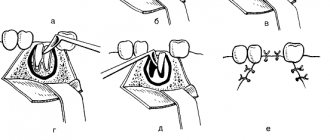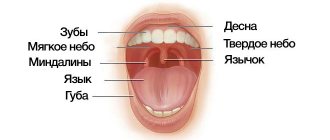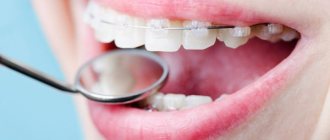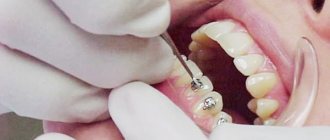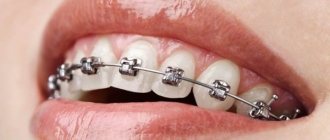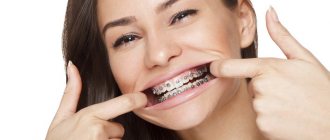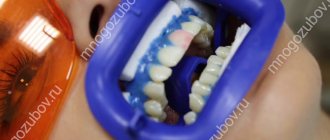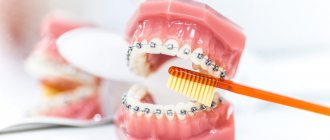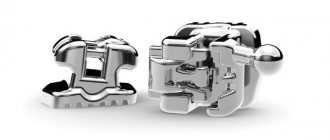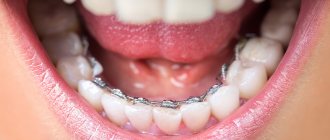Program
Module 1
Diagnosis of occlusal disorders, their prevention and principles of treatment in the clinic of therapeutic, orthopedic dentistry and orthodontics.
Lecturer: Konstantin RONKIN · DMD, MICCMO, LVIF, FIAPA
A one-day lecture course demonstrating diagnostic methods and treatment principles on patients will forever dispel the myth about the complexity of understanding occlusion. Seminar participants will learn to easily recognize various types of occlusal disorders and understand the principles of eliminating these disorders during therapeutic, orthopedic, orthodontic and surgical treatment. You will learn how to determine the correct occlusion with an accuracy of a fraction of a millimeter and master simple diagnostic and treatment techniques that do not require expensive equipment. TMJ dysfunction will no longer be a big mystery, and you will not only learn how to diagnose various conditions, but also learn how to prevent the appearance of symptoms of dysfunction when treating a patient, regardless of the type of dental treatment. This course is basic for any specialist. For those of you who want to study the problem of occlusion in more detail and gain further practical skills, this course is an indispensable theoretical basis.
Among the many topics, the course will cover the following questions:
- Concept of functional occlusion;
- Physiological principles of ideal occlusion;
- Signs of malocclusion and what they mean;
- Five-minute practical diagnosis of TMJ dysfunction;
- Methods for determining ideal occlusion for any type of dental treatment;
- Bite height. A scientifically proven method for changing it;
- Dental restoration and occlusion. How to guarantee the longevity of composite or ceramic restorations.
Module 2
Functional occlusion in aesthetic dentistry
Lecturer: Konstantin RONKIN · DMD, MICCMO, LVIF, FIAPA
The one-day hands-on workshop will teach you aspects of modern functional dentistry, which uses the neuromuscular balance of the masticatory muscles as the basis for determining the position of the mandible. You will gain practical skills to determine the correct occlusal position of the jaws using functional principles. The technique of using electrical neurostimulation in dentistry (TENS) will be discussed in detail. Each doctor will have the opportunity to practically master the use of TENS on a patient for muscle relaxation, diagnosing occlusal disorders, determining correct occlusion, treating TMJ pathology and individual grinding.
You will be able to gain practical skills in the following areas:
- Determination of positions of the lower jaw according to the principles of neuromuscular dentistry.
- Six dimensions of occlusion. Analysis of the occlusal plane.
- Registration of the position of the upper jaw in the space of the skull.
- Physiological and functional “bite height”.
- A scientifically proven technique for changing habitual occlusion.
- Principles of determining occlusion based on the use of electrical myostimulation of muscles.
- Signs and symptoms of temporomandibular joint (TMJ) disorders.
- Patient treatment plan, presentation and marketing principles.
- Characteristics of various types of electrical myostimulation and their use in dentistry.
- Indications and contraindications for the use of TENS. Methods of working with a myostimulator.
- Methods for adjusting orthotics (splint) and individual grinding.
- The use of TENS in restorative and orthopedic treatment, orthodontic correction, treatment of TMJ dysfunction, sleep disorders (night apnea), and the manufacture of sports mouthguards.
Module 3
Treatment of occlusal disorders using an orthotic
Lecturer: Konstantin RONKIN · DMD, MICCMO, LVIF, FIAPA
Any dental treatment that requires changes in the position of the lower jaw or decompression of the TMJ must be carried out using an orthotic. This one-day course is the logical conclusion of the first two modules of our program and is devoted to the treatment of occlusal disorders, TMJ pathology, and preparation for aesthetic dental reconstruction.
Main themes
- Physiological prerequisites for the use of neuromuscular treatment methods using orthotics
- Types of orthotics
- Design features of removable and non-removable orthotics
- Methods for manufacturing orthotics, clinical and dental features
- Step-by-step technology for making an orthotic in a dental laboratory
- Grinding of orthotics
- Features of treating patients using orthotics
- Clinical and dental stages of bite transfer before the second phase of dental treatment
Practical skills
- Grinding of removable and non-removable orthotics using a myomonitor and the K7 biometric system
- Clinical demonstration of putting and polishing an orthotic
Module 4
Individual grinding of teeth in clinical dentistry and orthodontics
Lecturers:
- Konstantin RONKIN · DMD, MICCMO, LVIF, FIAPA
- Levon SNEGIREV · orthopedic dentist, orthodontist
An integral component of an optimal bite is the ideal fissure-tubercle relationship between the teeth of the upper and lower jaws during closure. This is a guarantee of stable occlusion and a prerequisite for the lower jaw to be on a physiological trajectory. The goal of reconstructing the occlusal surfaces of teeth is to create conditions for unhindered movement of the lower jaw from a position of physiological rest to a position of multiple tooth contact along a neuromuscular trajectory. Our one-day master class will allow you to learn a simple technique for individual teeth grinding, which should be performed on all patients, regardless of the type of dental treatment.
Topics discussed
- Theoretical justification for the need for individual teeth grinding.
- Using muscle relaxation to grind teeth.
- Anatomical features of the occlusal surfaces of teeth.
- Features of grinding the patient’s teeth after restoration treatment, orthodontics, and temporary orthopedic devices.
Practical skills:
- Mastering the step-by-step classical method of individual teeth grinding according to Jenkelson.
- Demonstration of the technique on a patient.
Module 5: Analysis and interpretation of electromyography.
Module 6: Analysis and interpretation of computer gnathography.
Module 7: Analysis and interpretation of electrosonography.
Lectures for self-study.
This three-day master class will give you primary practical skills in using the K7 diagnostic system (Myotronics), provide a detailed methodology for decoding, differential diagnosis and analysis of data obtained using the listed tests. All three modules provide an in-depth description of the processes occurring in the joints and in the muscular system of the head and neck during occlusal disorders. A detailed understanding of such processes helps to understand what exactly is happening to the patient’s dental system and contributes to drawing up the correct treatment plan.
Module 8: Practical use of biometric diagnostics in complex rehabilitation of patients with craniomandibular dysfunction
Lecturer: Konstantin RONKIN · DMD, MICCMO, LVIF, FIAPA
This module will provide an overview of the methods of conducting and analysis of the results of electromyography, computer gnathography and electrosomnography. Real clinical cases will be analyzed in detail. Each module participant will have the opportunity to discuss their patient based on the provided models, images and K7 diagnostic results. Practical skills will include practicing techniques for correctly taking scans and interpreting them.
Module 9: Radiographic examination in dentistry
Lecturers: Konstantin RONKIN DMD, MICCMO, LVIF, FIAPA
David NAZARYAN · Ph.D., maxillofacial surgeon, microsurgeon
You will become familiar with the variety of modern types of x-ray examination and receive clear selection criteria for each clinical situation in order to achieve optimal results. The practical part of the master class provides a detailed technique for deciphering targeted and interocclusal photographs, orthopantomograms, teleroentgenograms, various types of TMJ radiography, three-dimensional images, MRI, etc. You will learn to identify radiological signs of various types of pathology of the dental system, joint dysfunction, respiratory tract disorders, disorders in the cervical spine, pathology of the development of the dental system.
Module 10: Teleradiography in the clinic of prosthetic dentistry and orthodontics. Decoding of TRG using the Susoni method
Lecturer: Evgenia SHIKOVA · orthodontist, FICCMO
The purpose of the module is to reveal the benefits of this concept and the ease of its integration into the daily treatment process. The seminar consists of five information blocks: longing, planes, arcs, analysis, conceptual apparatus. The result of the training will be the implementation of the obtained data in orthodontics and orthopedic dentistry.
Module 11: Combination of osteopathic and dental treatment methods for patients with occlusal disorders, TMJ pathology and sleep apnea
Lecturers: Konstantin RONKIN DMD, MICCMO, LVIF, FIAPA
Shakhnoza USMANOVA · dentist-therapist of the highest category, osteopath, member of ICCMO
The proposed one-day seminar is devoted to the issues of comprehensive diagnosis of dental patients, including patients with occlusal problems, malocclusion, TMJ dysfunction, and sleep apnea. The seminar will discuss in detail the clinical manifestations of occlusal disorders associated with deformation in the cervical spine. You will learn about the principles of diagnosis in osteopathy and treatment methods, in which cases and at what stages of dental treatment the help of an osteopath is needed, how osteopathic treatment can help you in eliminating bite pathology or treating joint dysfunction. You will also master the simplest diagnostic skills in osteopathy and manual therapy methods.
Module 12: An integrated approach to the diagnosis and treatment of patients with combined pathology of the craniomandibular system
Lecturer: Konstantin RONKIN · DMD, MICCMO, LVIF, FIAPA
This course is the final one and summarizes all the knowledge and skills acquired over the previous 11 modules and is aimed at developing clinical thinking, protocols and algorithms for the diagnosis and treatment of simple and complex patients who turn to us for help every day.
